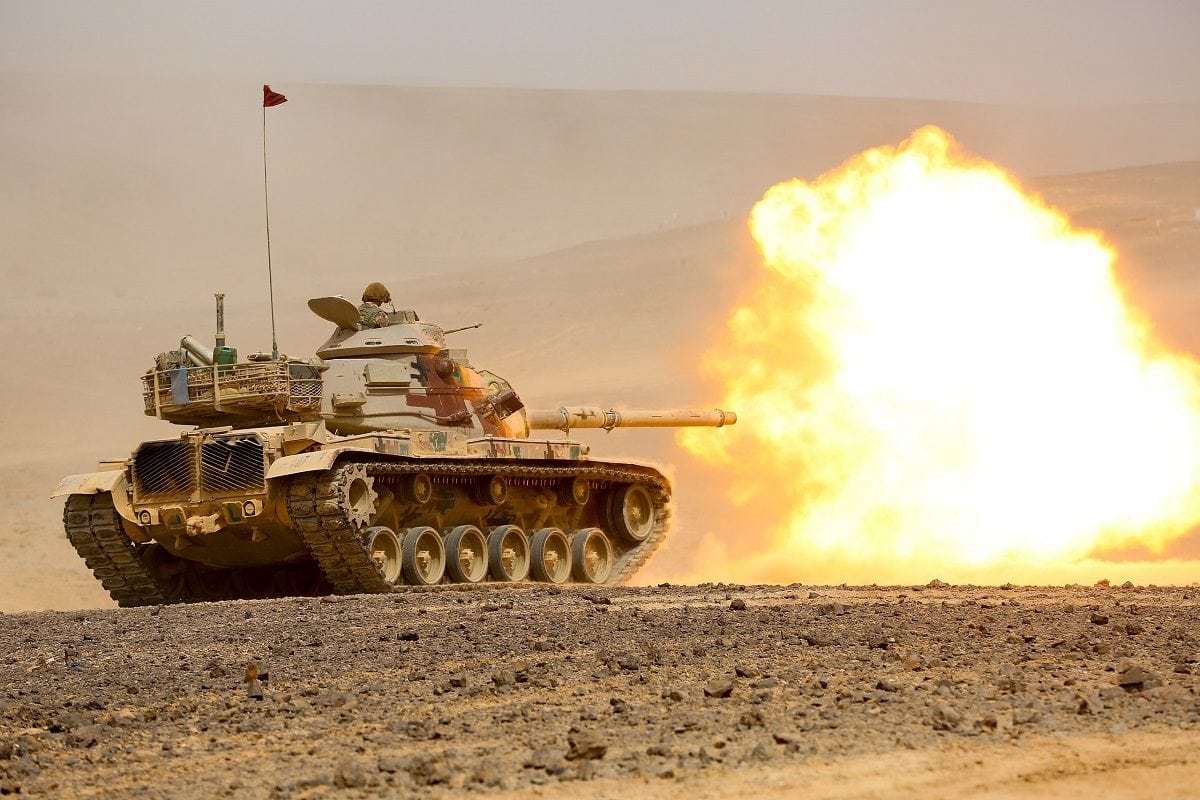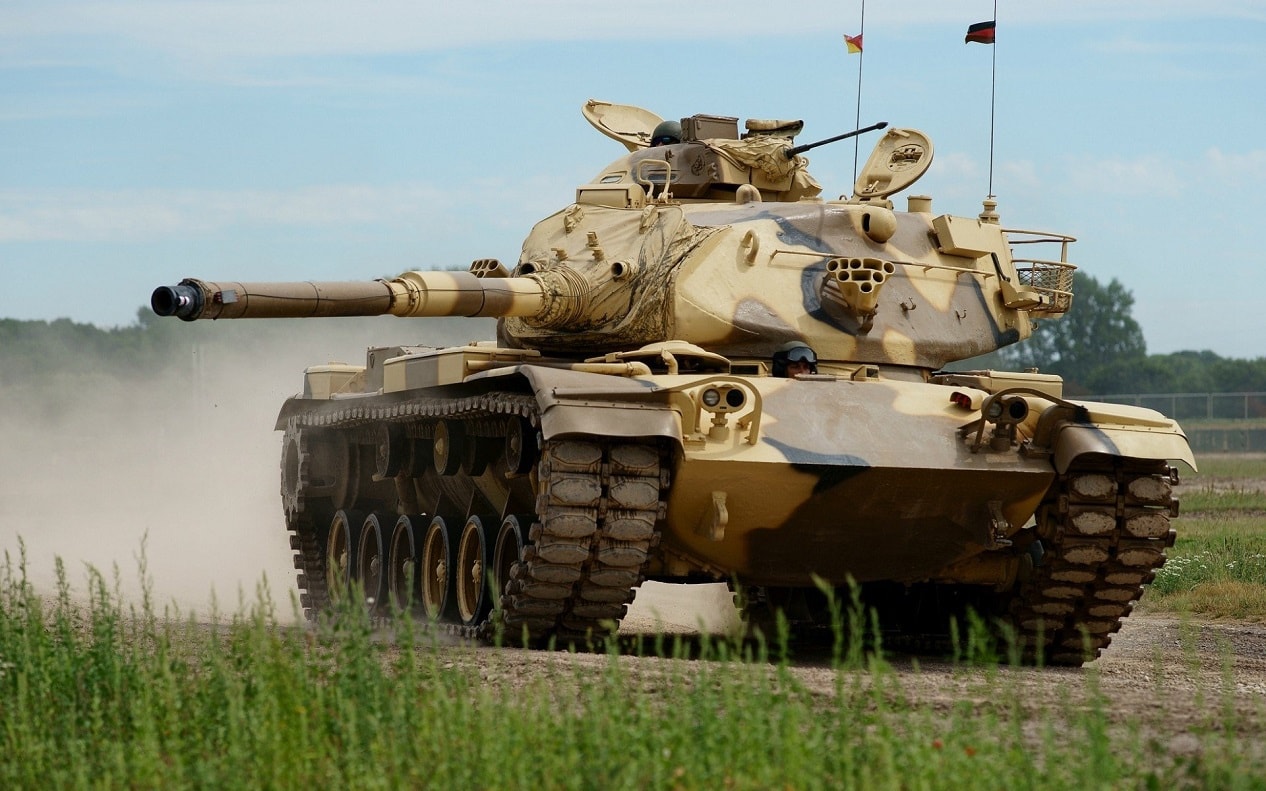Russia’s arsenal of main battle tanks (MBTs) is reported to be twice as large as that of the United States – or at least it was. The Russian Army has lost scores of tanks, and the situation has gotten so bad that aging and largely obsolete T-62 MBTs are now being deployed to Eastern Ukraine. The Kremlin had maintained large numbers of the Cold War T-62, and other armored vehicles, for a time when they might be needed.
That time apparently is now.
Moscow simply doesn’t have newer platforms, notably the T-90M or the T-14 Armata, in significant numbers so it is relying on the older tanks to do the fighting. Yet, Russia is hardly alone in maintaining older platforms.
America’s M60s
At the Sierra Army Depot (SIAD) in Herlong, California, the United States Army stores vast quantities of military hardware. Constructed in 1942 as one of several ammunition storage facilities located far enough inland to be safe from Japanese attack, yet close enough to western posts and ports to facilitate the shipment of supplies, SIAD is home to a number of older M60 tanks.
Could or should some of those MBTs head to Ukraine?
Already, the United States and its partners are supplying anti-tank weapons to support Kyiv, and Spain recently announced it would send Ukraine some 40 German-made Leopard 2 tanks. In addition, Poland has sent upgraded T-72s, which also date back to the late Cold War, while Slovakia has offered its fleet of aging T-72M tanks as well. Slovenia had further pledged to send 30 to 40 M-84s, a Yugoslavian variant of the T-72, to help Ukraine.
Though the Biden administration has made it clear that no M1 Abrams tanks would head to Ukraine, the U.S. will supply NATO allies including Poland with the MBT in the coming years. In that way, Poland supplies Ukraine with T-72s and the U.S. reequips Poland with the Abrams.
So back to the original question, what about some of the M60s?
That isn’t likely to happen for a number of reasons. The first is that Spain will have to train the Ukrainians to use the Leopard 2, and adding another platform to the mix would present additional logistic challenges. Just getting the tanks to Ukraine is a problem, but so too could be a lack of spare parts. Receiving older T-72s is a no-brainer, as Ukraine operates the tanks and its mechanics know how to repair them and parts can be salvaged from damaged tanks, including those operated by Russia.
That wouldn’t be so easy with the M60.
Another consideration is how Moscow could respond. It is no secret that the United States is supplying weapons to Ukraine, and will certainly continue to do so, but deploying the tanks could draw Washington and Moscow closer to open conflict. “There is the possibility that Moscow could see U.S. tanks in Ukraine crossing some sort of redline. While I don’t think Putin would be so bold to directly attack NATO territory, he may well decide that he should attack convoys bringing in M60 tanks. And those convoys could very well carry U.S. citizens to help facilitate the transfer. And if there were casualties, that could clearly spike tensions to the point of a no-return,” explained Harry J. Kazianis, President and CEO of the Rogue States Project.

An M60A1 tank from the Royal Jordanian Armed Forces fires a round at a range in Wadi Shadiyah during a massive military demonstration in front of dignitaries and media, May 18. HRH Prince Feisal, the Supreme Commander of the JAF, Chairman of the Joint Chief-of-Staff Gen. Mashal Al Zaben and Gen. Lloyd Austin III, head of the U.S. Central Command, were among those who attended the culminating event of the two-week, multinational Exercise Eager Lion 2015. In addition to the U.S. and the Hashemite Kingdom of Jordan, participating nations included Australia, Bahrain, Belgium, Canada, Egypt, France, Iraq, Italy, Kuwait, Lebanon, Pakistan, Poland, Qatar, Saudi Arabia, the United Arab Emirates, the U.K. and representatives from NATO.
A final consideration is that the U.S. may be holding back those M60s for another potential conflict. Taiwan continues to operate the Cold War-era American-made tank and announced last year that it would upgrade its fleet of M60s. Given that China continues to maintain that it could bring Taiwan back to mainland control by force, the United States may want to keep those M60s for the island nation.
Now a Senior Editor for 1945, Peter Suciu is a Michigan-based writer who has contributed to more than four dozen magazines, newspapers and websites. He regularly writes about military hardware, and is the author of several books on military headgear including A Gallery of Military Headdress, which is available on Amazon.com. Peter is also a Contributing Writer for Forbes.

